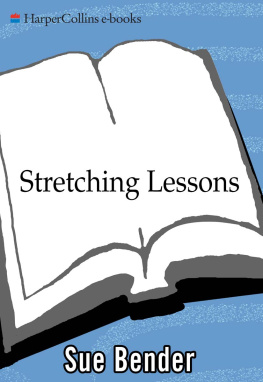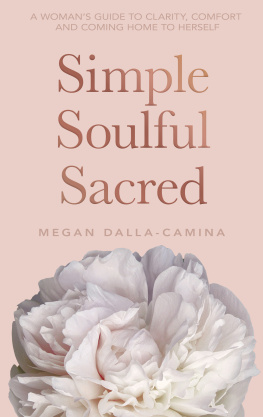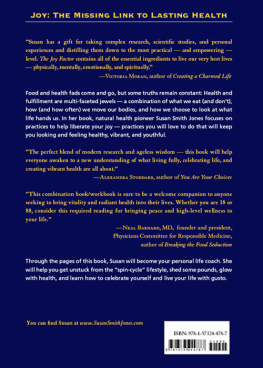Everyday Sacred
A WOMANS
JOURNEY
HOME
SUE BENDER
Illustrations by Sue and Richard Bender

With love this book is dedicated to
Richard, Michael, and David
and
Mitzi McClosky
and
Laurie Snowden
We do not great things, we do only small things with great love .
M OTHER T ERESA
CONTENTS
This story is about a bowl.
A bowlwaiting to be filled.
If what I have just written makes no sense to you, I am not surprised.
If I had known in the beginning what I was looking for, I would not have written this story.
I had to trust there was a reason I had to write, and I didnt have to have it all figured out in order to begin.
I would find what I was looking for along the way.
For as long as I can remember I have been listening to a harsh, critical voice inside me, but Ive lived with it so long that I never really noticed the influence it was having on my life. I not only listened, I believed what this harsh judge was saying.
The voice passes judgment on everything I do.
Youre not measuring up! the judge shouts.
Im never sure what I am supposed to measure up to, only that I never will.
Nothing I do will ever be enough.
Dont complain, the judge adds, you have it easy.
Judging myself harshly for having a harsh judge only makes matters worse. When I try to ignore it, the voice gets louder.
I could have read all the books in the world about showing loving kindness toward oneself, but I could do nothing to stop the voice of the judge.
I felt a hunger inside that I didnt understand and couldnt satisfy.
Miracles come after a lot of hard work .
That was the last line of my first book, Plain and Simple . It was the story of a journey that led me to live with the Amish.
Everyday Sacred is the story of another journey, a journey to learn about the sacred in my own life.
My need to learn was connected to the harsh judge, but I didnt understand the connection until I had almost completed this book. Not everyone has a harsh judge, but many of us have some inner voice that has the power to undercut, to make us doubt ourselvesand leaves us wondering why we arent more content.
To begin to make every day sacred, I first had to step back and look at the judgeand everything else in my life.
Maybe I wrote Everyday Sacred to learn more about miracles.
HOW IT BEGAN
Ill never write another word, I thought with relief when Plain and Simple was published. I felt completeexhausted and satisfied.
I had survived an obsessive love affair that had taken over my life for seven years. Cross out person and put in project: the feeling was the same. Id felt the excitement of going over-boarda fierce single-minded intention, none of it making senseand I believed I had no other choice.
Now I had a choice.
I would come home and calm down. I would do one thing at a time. I would work in my studio with clay, something I loved doing. I wouldnt rush. I would live the simple life I had learned about among the Amishcalm and purposeful.
Art is order, made out of the chaos of life, Saul Bellow once wrote. I scribbled the words in pencil on a scrap of torn paper, placed it on the white Formica table next to my bed, and held it down with a large pewter heart.
I expected my life to be transformed.
I expected a miracle.
At first my days were unhurried. I enjoyed whatever I was doing. The spirit of the Amish was all around. On those days I felt grateful.
Then, hardly noticing it, I started getting busy, saying yes to the many things that were offered. Suddenly I had too much on my plate. I had slipped back into an old groove, frantically scurrying to get everything done, crossing things off a never-ending list, and feeling the constant weight of all that was left undone.
I was back in the world of never enough.
I still felt a hunger inside that I didnt understand and couldnt satisfy.
You should have called your book Hectic and Chaotic ! my son David observed.
I had learned a lot, but not enough.
The day I heard that Plain and Simple had made the New York Times best-seller list I happened to meet a good friend at the vegetable store. Glowing, I told her the remarkable news. It seemed like a miracle.
What number are you ? she asked, her voice showing neither delight nor wonder.
For a moment, I didnt even know what she was asking.
Then I realized she wanted to know what position I had on the list. That was one of those moments when everything stops and a space opens up. In that instant I could see that in this world nothing I did would ever be enough.
I was still anxious. I was fifty-eight years old and did not want to spend my remaining years feeling this way. Something was still missing, something more that I should be doing so I could feel good about myself and the life I was leading. Even this achievement, far beyond anything I had ever expected or dreamed possible, could not silence that critical voice.
EVERYDAY SACRED
EVERYDAY SACRED appeared one day in my minds eye, in sure, bold letters, like one of those blinking restaurant signs. I didnt even know what everyday sacred meant, but I knew it would be the title of my next book.
Two years went by and I didnt write a word.
Then on a day when I was feeling particularly discouraged, another clear image appeared:
A BEGGING BOWL .
Actually, it reappeared.
I had read M. C. Richardss Centering years before. It was a book about clay and art and life. In it, Richards described Jean Genet, the French playwright, who had said he wanted to roam the countryside like a monk, holding a begging bowl, having filled it with what he needed for the nourishment in his life.
EVERYDAY SACRED and now the BEGGING BOWL .
It was obvious to all who knew me that I wasnt a monk, and the very idea of begging would make most of us uncomfortable. In spite of that, the image of a begging bowl reached out and grabbed my heart.
The image of the bowl became the image of the book.
All I knew about a begging bowl was that each day a monk goes out with his empty bowl in his hands. Whatever is placed in the bowl will be his nourishment for the day.
I didnt know whether I was the monk or the bowl or the things that would fill the bowl, or all three, but I trusted the words and the image completely.
At that moment I felt most like the empty bowl, waiting to be filled.
I turned on the computer, hoping to write, but no words came. With the computer still humming, I walked, practically galloped downstairs to the studio and opened a twenty-five-pound bag of clay, ready to make my first begging bowl. The moment my hands touched the clay, I remembered a wise and wonderful statement that M.C. Richards had made many years ago:
Its not pots we are forming, its ourselves .
Like the monk going out with his empty bowl, I set out to see what each day offered.
I began noticing, the way an observer might, what I was doingall my thoughts, feelings, and experiences that might be connected to everyday sacred .
Somehow, in some way not yet shown to me, I felt there was a connection between EVERYDAY SACRED and the BEGGING BOWL .
I looked up sacred in the dictionary and found: entitled to reverence. Close by was sacrament : a practice that is considered especially sacred as a sign or symbol of a deeper reality.
Are ordinary, familiar things entitled to reverence?
I wanted to see with fresh eyes.
What might have been there all along that I had not been able to see? What had I taken for granted?












